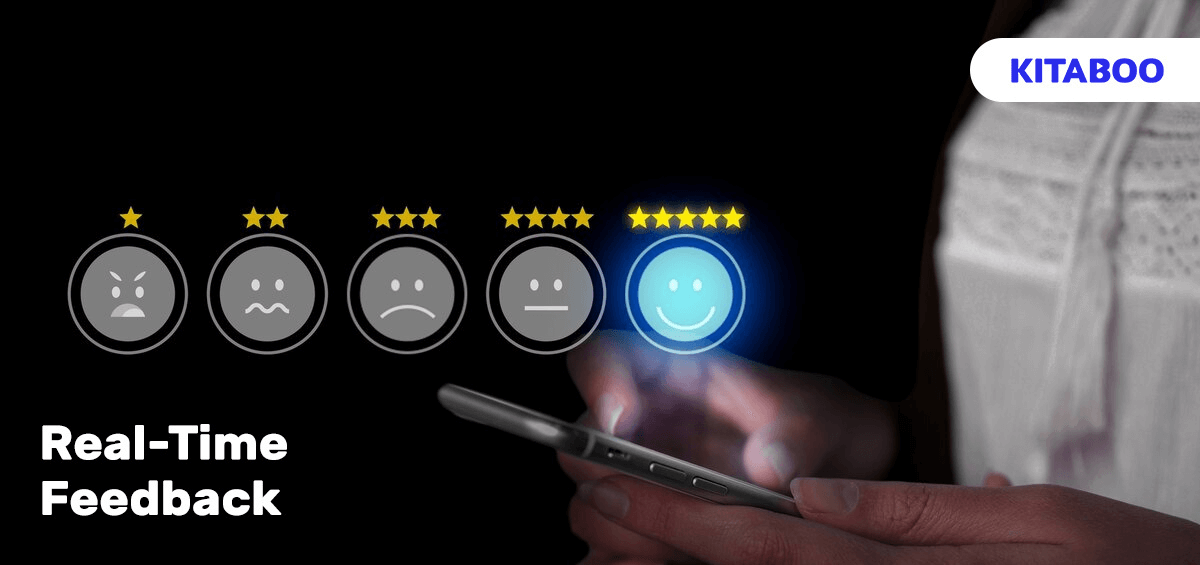Gone are the days when annual or semi-annual performance reviews were the norm. Today, a more agile and responsive approach to employee feedback is taking center stage – real-time feedback. In this era of rapid change and innovation, organizations are increasingly questioning the effectiveness of traditional performance reviews.
Are they truly the best way to assess and enhance employee performance? Or is real-time feedback the key to unlocking untapped potential and driving continuous improvement?
This blog will explore the nuances, advantages, and drawbacks of each approach and evaluate which is a more effective form of providing feedback.
Table of Contents
Understanding Traditional Performance Reviews
Traditional performance reviews have long been the undisputed method of evaluation. These reviews were typically conducted annually or semi-annually and followed a well-established process. Here’s how they are typically given:
Step 1: Scheduled Meetings
Traditional performance reviews are a highly structured affair. Employees and managers schedule a formal meeting in advance, marking it on their calendars as the ‘big day.’
Step 2: Self-Assessment
Before the review, employees are often required to complete a self-assessment form. This document allows them to reflect on their accomplishments, strengths, and areas for improvement.
Step 3: Manager's Evaluation
Managers also dedicate time to preparing for the performance review. They evaluate the employee’s work, assess their progress against predefined goals, and gather feedback from colleagues.
Step 4: In-Person Discussion
The review meeting is often face-to-face, where the manager discusses the employee’s performance, strengths, weaknesses, and development opportunities. It was an opportunity for a candid conversation about the past year’s achievements and challenges. After this, employees were assigned ratings or rankings, which were used to determine promotions, raises, and bonuses.
Step 5: Documentation
Comprehensive documentation is a hallmark of traditional reviews. Everything discussed in the meeting is carefully documented in the employee’s personnel file, creating a permanent record of their performance history.
While this process has its merits, it also has its fair share of drawbacks. The annual or semi-annual nature of these reviews makes them infrequent, and feedback often arrives too late for meaningful course correction. Moreover, the rigid structure could sometimes lead to anxiety for both employees and managers.
Let’s fast forward to the modern business landscape and explore how real-time feedback has reshaped performance evaluations.
How Real-Time Feedback Has Caused a Shift in Performance Evaluation?
Real-time feedback has emerged as a game-changer in the realm of performance evaluations. This approach breaks away from the traditional, annual, or semi-annual reviews and ushers in a more agile and dynamic system. Here’s a closer look at the merits of real-time feedback:
Timeliness and Relevance
One of the most significant advantages of real-time feedback is its immediacy. Employees receive feedback when it’s most relevant rather than waiting for months to discuss performance. This allows for swift course corrections and improvements, ensuring small issues don’t snowball into significant problems.
Continuous Improvement
Real-time feedback fosters a culture of continuous improvement. When employees receive ongoing input, they are more likely to make incremental enhancements to their work, leading to constant growth and development.
Enhanced Engagement
Real-time feedback engages employees in a meaningful way. Knowing their efforts are acknowledged and assessed regularly can boost motivation and job satisfaction. This can result in a more committed and productive workforce.
Better Relationships
Regular feedback promotes open communication between employees and managers. It creates an atmosphere where both parties feel comfortable discussing challenges and successes, leading to stronger, more transparent working relationships.
Goal Alignment
Real-time feedback allows for immediate alignment of individual goals with organizational objectives. Employees who receive feedback tied to specific goals can make real-time adjustments to ensure their work contributes effectively to the company’s mission.
Data-Driven Insights
Real-time feedback often leverages data and analytics to provide deeper insights into an employee’s performance. This data can inform decisions about promotions, raises, and professional development in a more data-driven manner.
Comparing Real-Time Feedback vs. Traditional Performance Reviews
Let’s break down the key differences between real-time feedback and traditional performance reviews to help you determine which approach may be better suited for your organization’s needs:
|
Real-Time Feedback |
Traditional Performance Reviews |
|
| Frequency |
|
|
| Timeliness |
|
|
| Flexibility |
|
|
| Employee Engagement |
|
|
| Improvement |
|
|
| Relationship Building |
|
|
| Personalization |
|
|
| Anxiety |
|
|
| Adaptability |
|
|
So, which is better?
Determining which approach is better depends on various factors, including your organization’s culture, goals, and the nature of your workforce. Here are some considerations:
- Real-Time Feedback: This approach is ideal for companies that value agility, ongoing development, and strong employee-manager relationships. It’s particularly effective in fast-paced industries where quick adjustments are essential.
- Traditional Performance Reviews: Traditional reviews can work well for organizations that require a structured, formal evaluation process, such as those with strict compliance requirements or long project cycles. They may also suit industries where stability and consistency are paramount.
Also Read: Interactive eBooks
Final Thoughts
In reality, the best approach might not be an either-or scenario. Many organizations are finding success in adopting a hybrid model that combines the benefits of real-time feedback with periodic, more formal reviews. This allows for ongoing communication while providing a structured evaluation at certain intervals.
Delivering appropriate training and development for employees following their performance evaluations is essential for realizing positive business outcomes. Digital publishing platforms like KITABOO are ideal for crafting highly customized and engaging training materials.
Discover how our innovative ePublishing platform can transform your content into engaging digital experiences. Request a demo today to get started!
Suggested Reads:
Discover How An Ebook Conversion, Publishing & Distribution Platform Can Help You
Kitaboo is a cloud-based content platform to create-publish & securely distribute interactive mobile-ready ebooks.
You May Also Like









